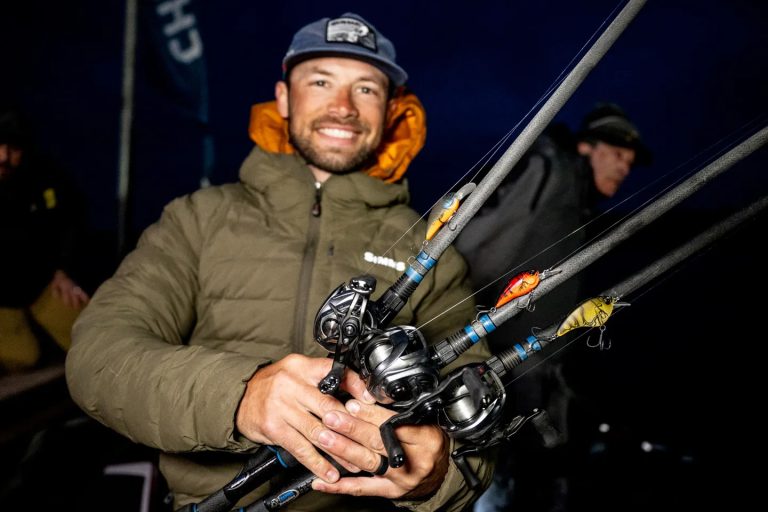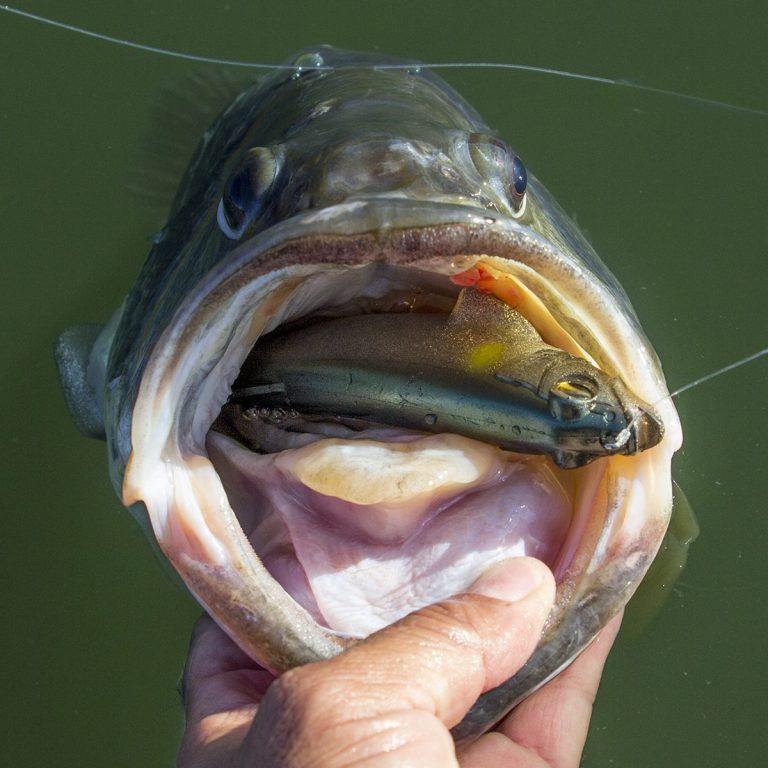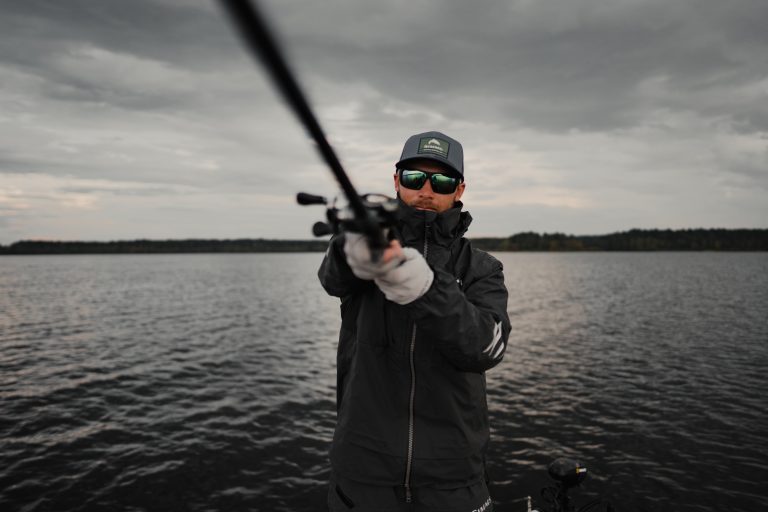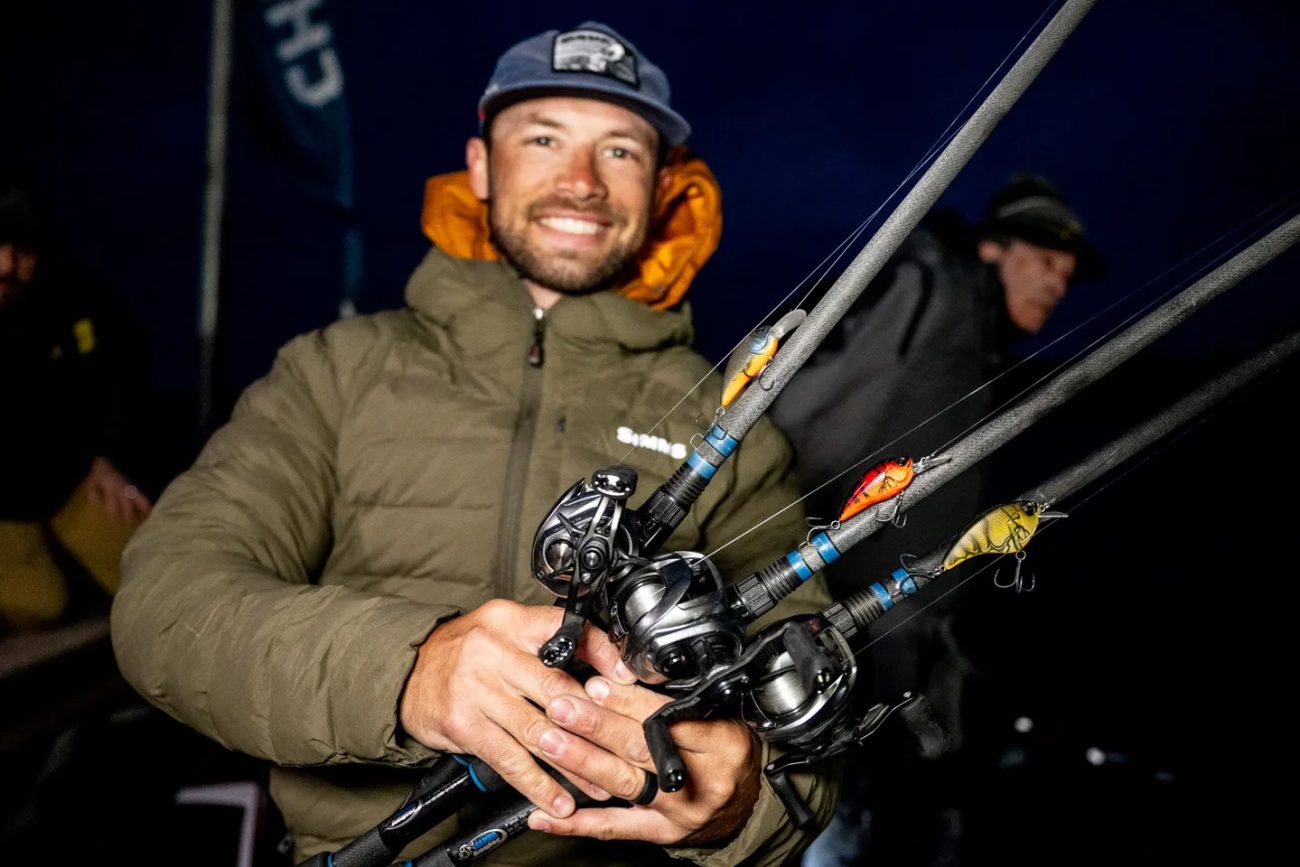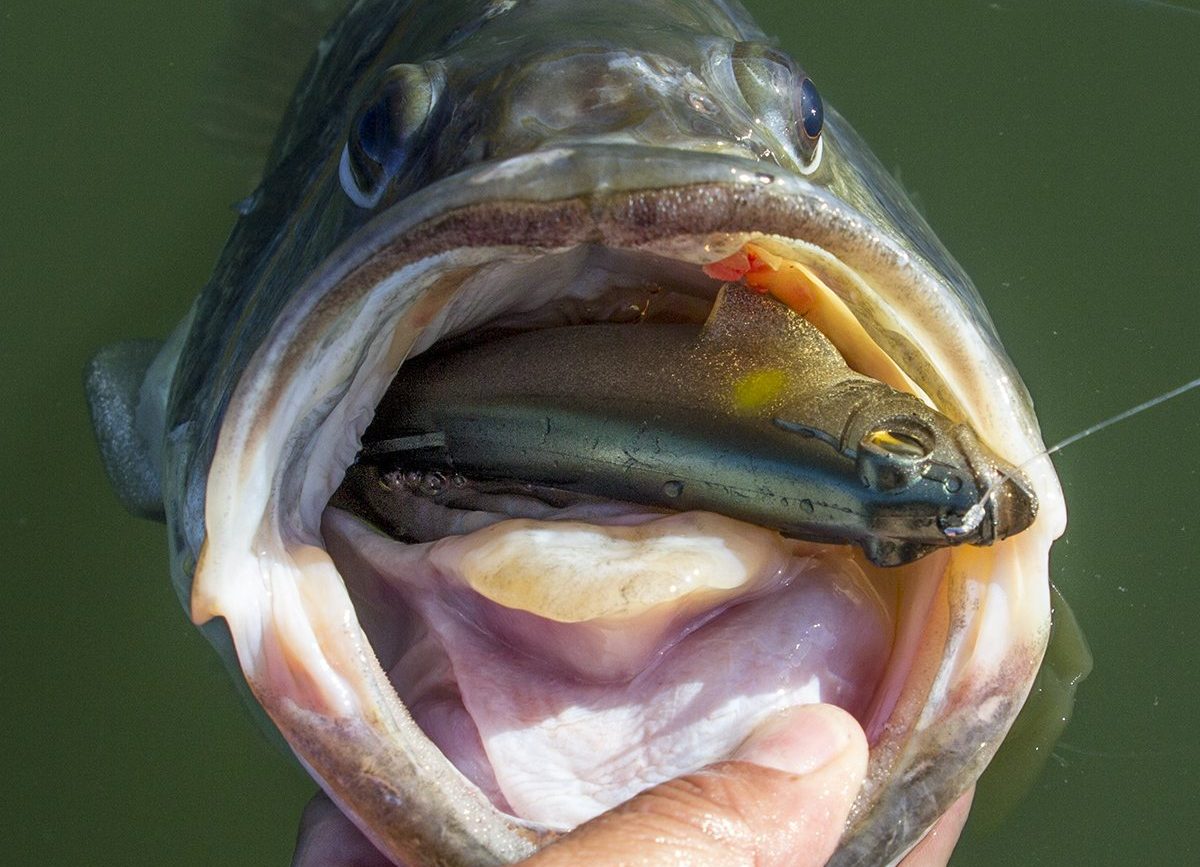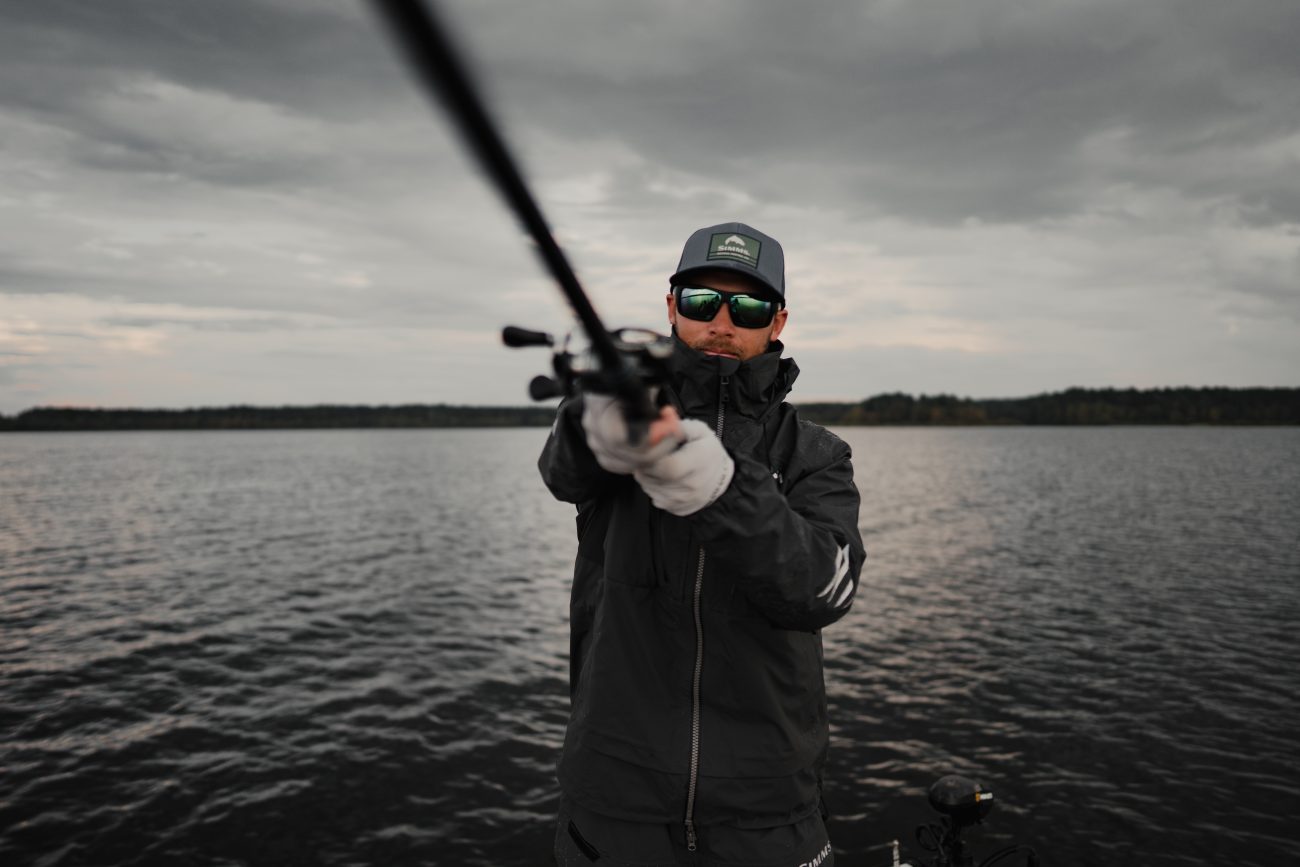Chasing bass on places like Lake Ontario where there may be up to 50 feet of visibility, there were occasions when Ontario pro and guide Nick Cousvis knew he was in the right area but could not get the fish to the boat. He could’ve been crushed, but instead he set about to deconstruct and rebuild his springtime jerkbaiting. When the water temp hits 50 degrees, they’re a primary tool, and he’s learned to maximize his effectiveness.
Clear water smallmouths can be exceptionally voracious, sight feeding from long distances to attack a jerkbait. When it works it can be one of the most exhilarating bites around. On the flip side, however, there are times when a brown bass shows interest, but just follows your minnow imitator. Even worse, sometimes they’ll freight train a jerkbait and somehow fail to get hooked. It’s maddening to think that up to nine razor-sharp hook points can’t find a home.
While largemouths may not be quite the sight feeders that smallmouths are, many of the same strategies he’s developed apply equally to them. They’re not necessarily lazier, but they come up first, funneling in from their wintering holes, and tend to prefer a slower, more deliberative approach.
Here’s how he gets it done when winter turns to spring up north:
Key Tools and Colors
It may be counterintuitive, but one key to Cousvis’ repeated success with smallmouths is downsizing his lures. He knows that the original Megabass VISION ONETEN has the right action to draw bass in, but his go-tos are the VISION ONETEN JR and the VISION ONETEN+1 Jr, and occasionally others like the 3-inch X-NANAHAN (available in three depth ranges) and X-80 TRICK DARTER.
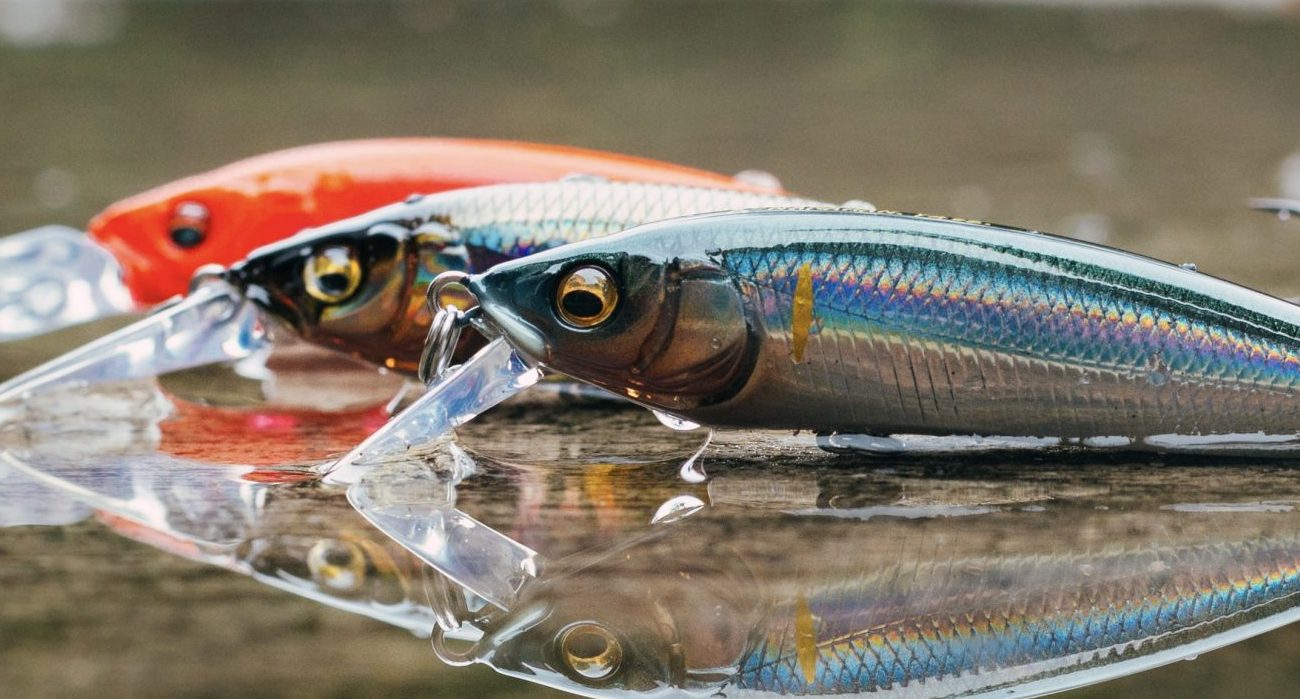
When he’s convinced that fish are in an area and willing to bite—but he’s not getting bit—his first adjustment is usually not to change lures, but rather to change colors.
“In the world of soft plastics, you always hear guys talk about white, black and green,” he said. “But in the world of jerkbaits, I think in three different categories: opaque, which provide no light penetration; translucent, which allows some light through; and transparent, where it all goes through. On calm, sunny days, I’ll start with something transparent so they can’t get a good look at it. Then I might switch to something translucent as the conditions change.
“Some of my favorite transparent colors are GP Pro Blue and Crystal Shad. I also like GLX Northern Secret which has a bit of chartreuse hidden inside the belly, so they just see a flash of color on a quick jerk. In translucent colors, I like Gizzard Shad and HT options like HT ITO Tennessee Shad or the Wakasagi version, which have a mix of reflective and see-through properties. I use those on darker days and early in the morning. And then when there’s a lot of chop I like the GG and more metallic colors which allow much less light penetration and therefore stand out more in the water. They find it easier, see it and attack it. But don’t forget that there’s more to Megabass colors than meets the eye, especially in the package. A color like Kameyama Ghost Pearl looks opaque, but when you hold it up to the light you’ll see it actually lets a lot of light through. To me, that would be a translucent color option.”
With largemouthS, color may play an even larger role than it does with smallmouth. Early in the season Cousvis believes that the green bass particularly like bright colors, and some of his go-to choices are Table Rock SP and Wakin Reaction. Any touch of chartreuse, orange or red can serve as a bite-enhancer and feeding trigger. Even when the bass are feeding on something more natural, like a GP Pro Blue or Mat Shad, he’ll always have a brighter model rigged up and ready to go.

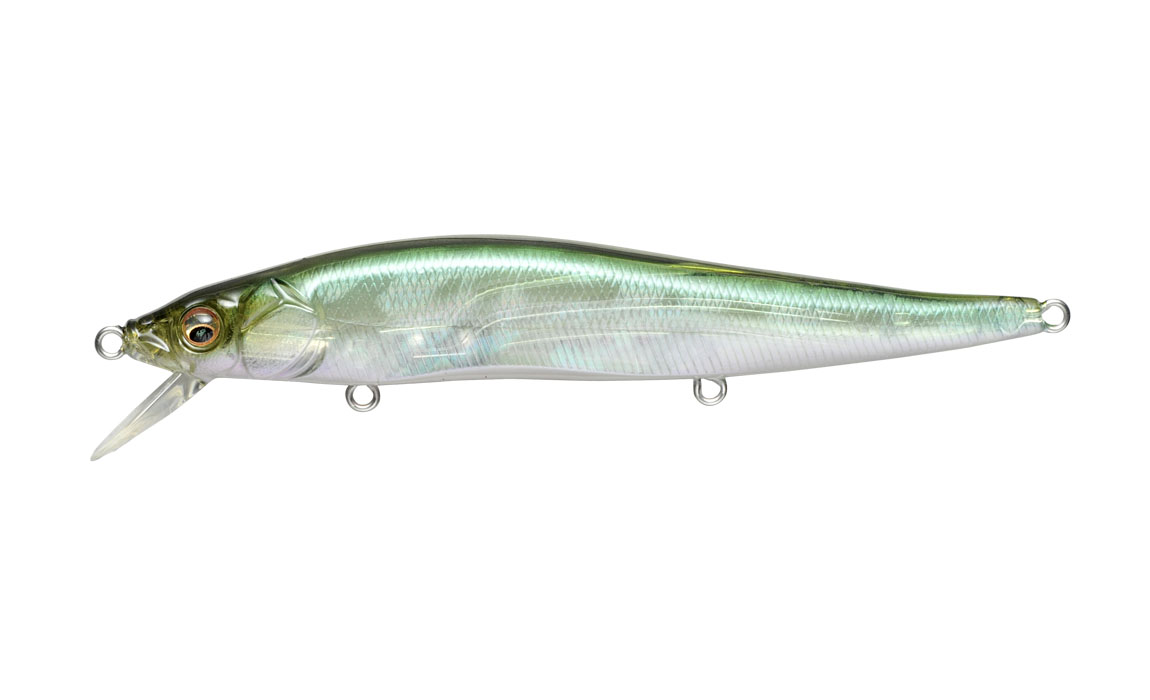
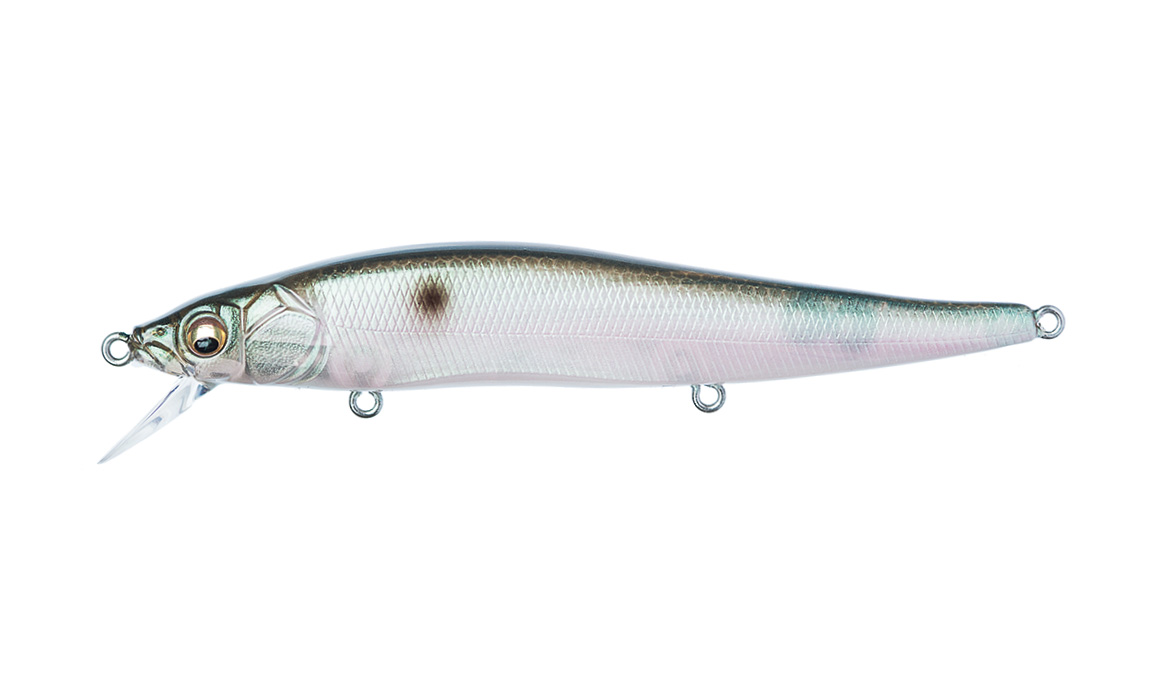

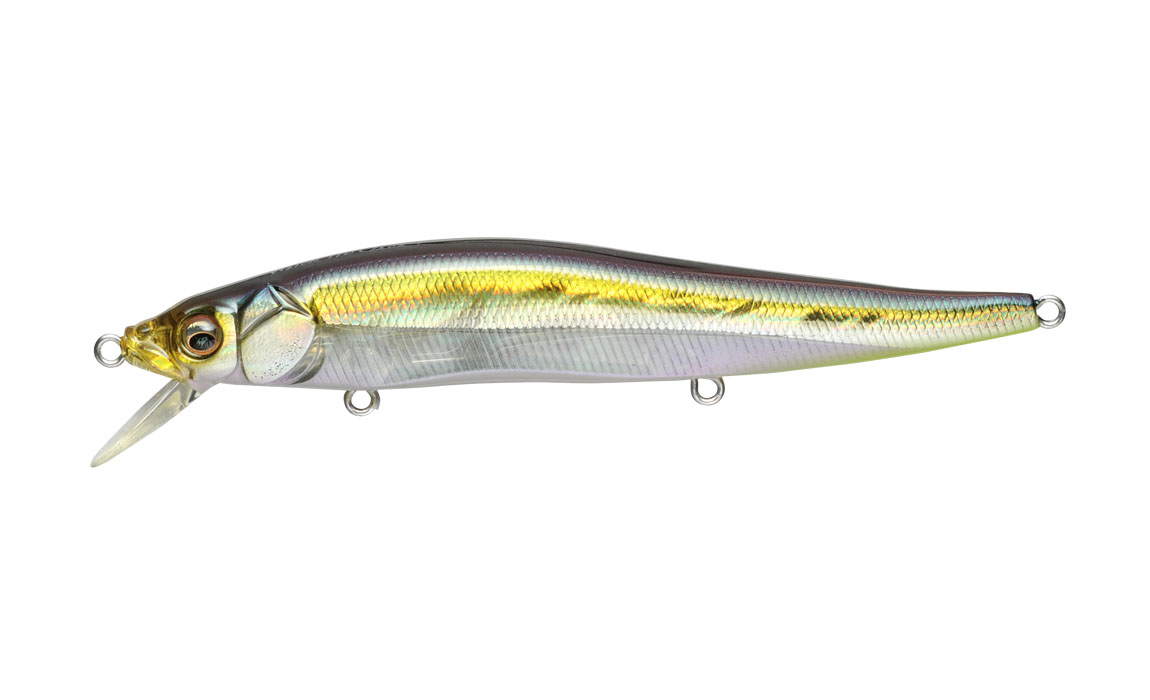
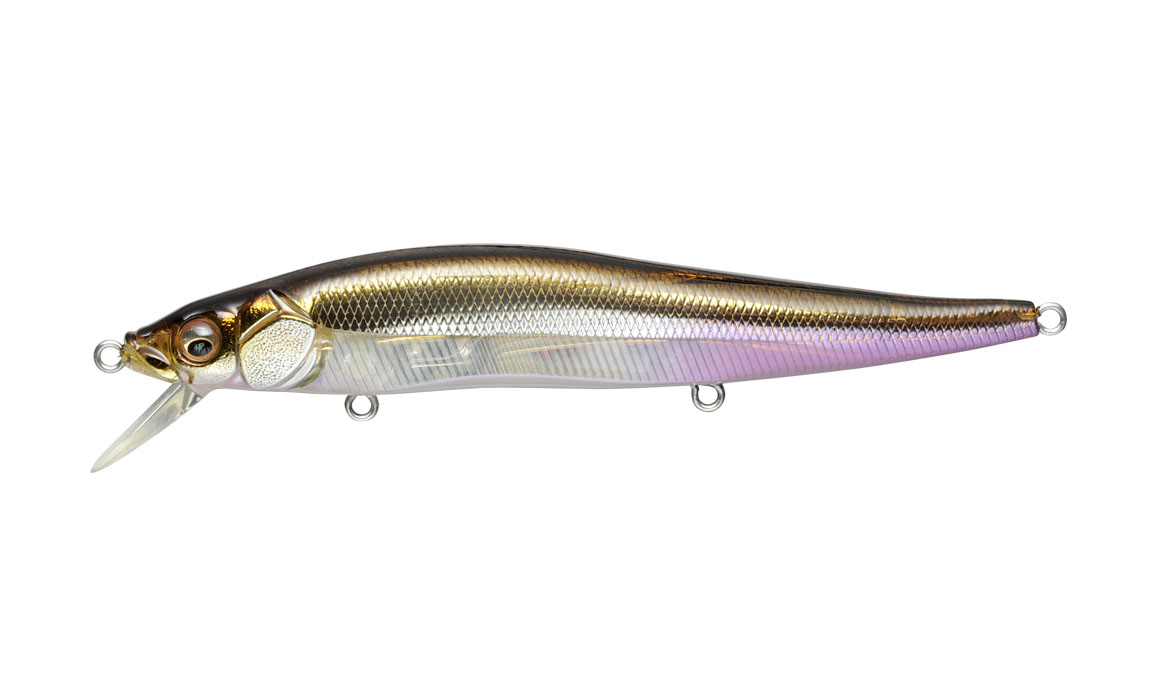
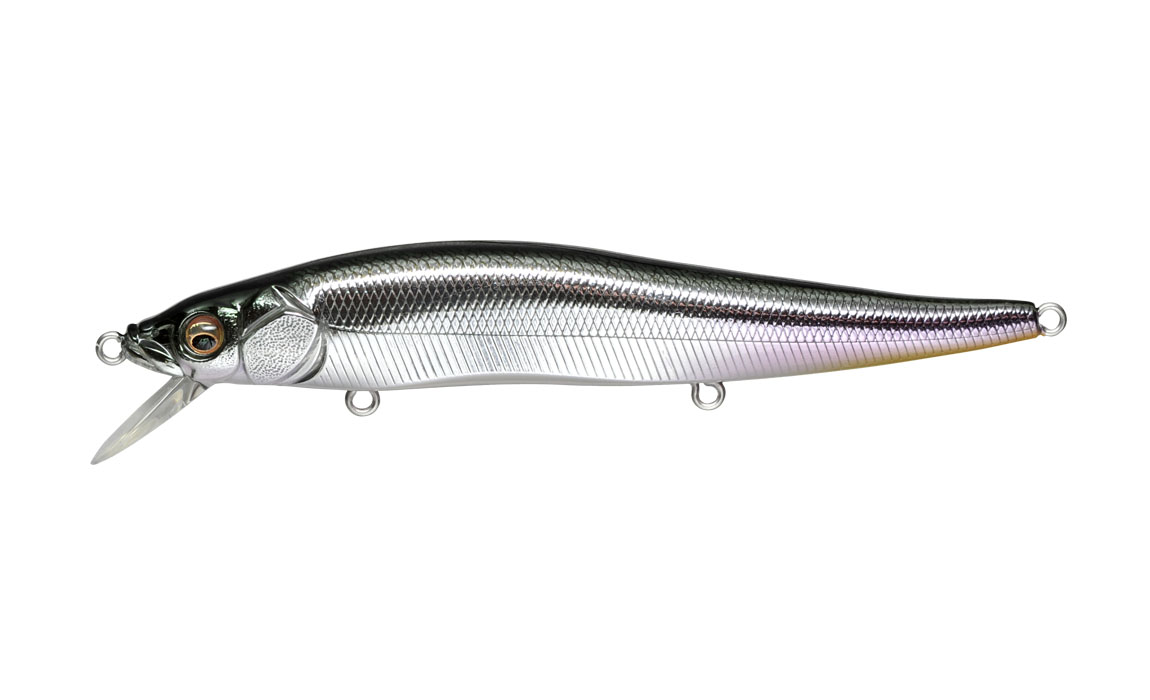
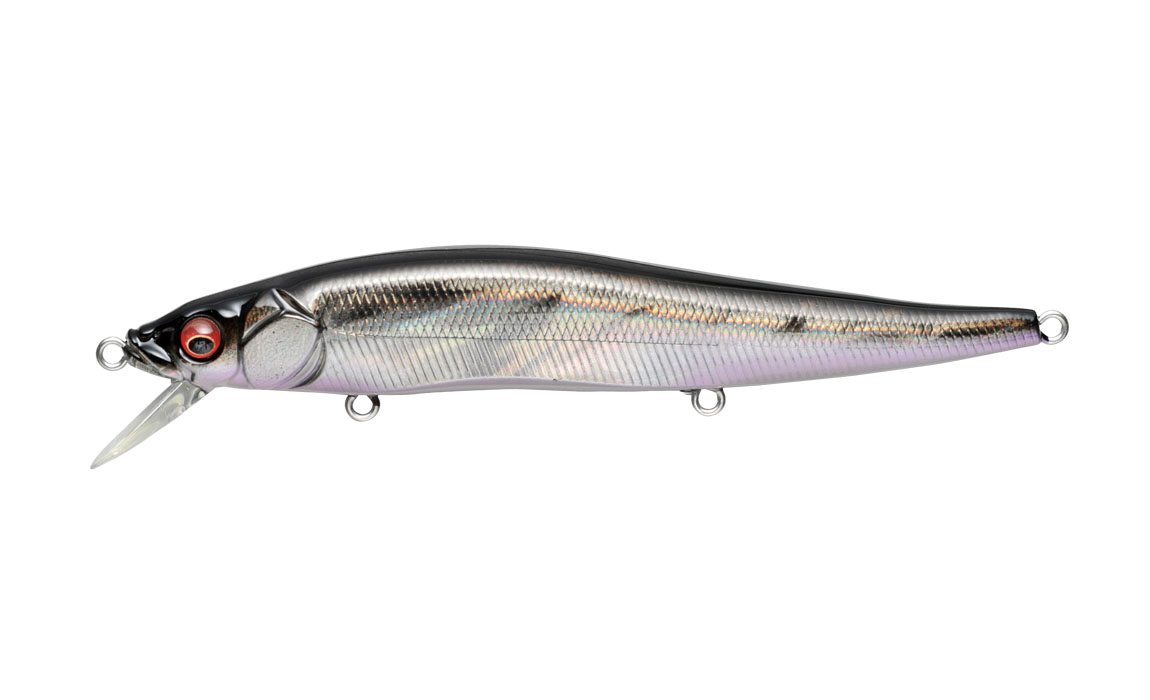
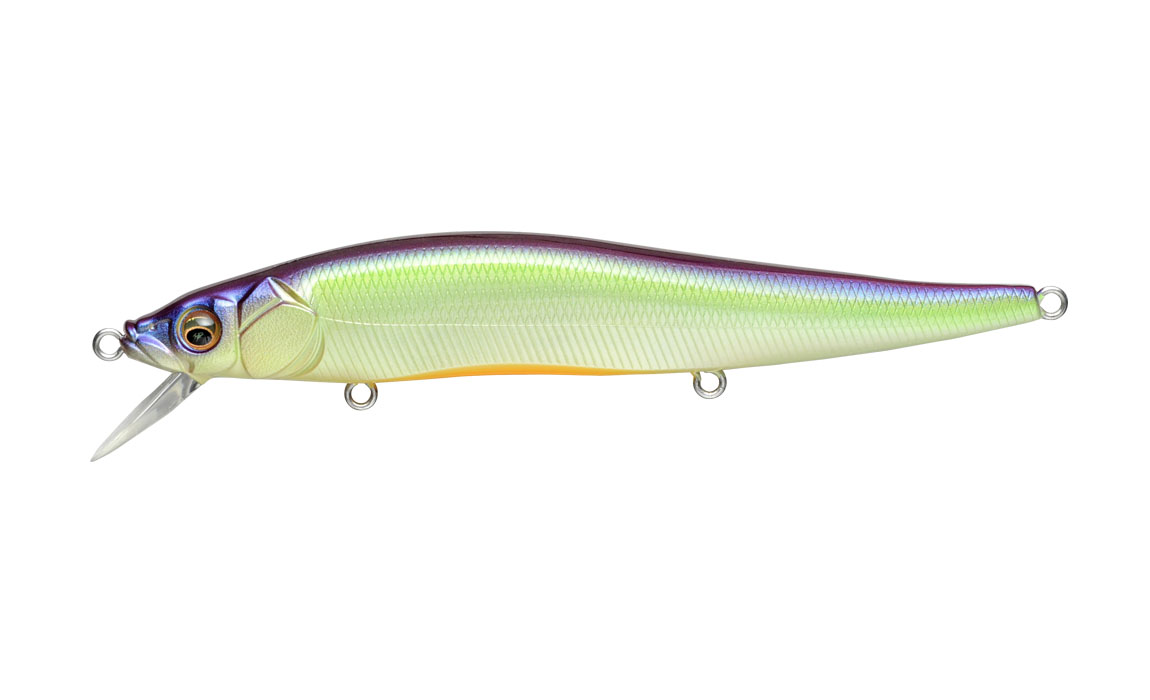
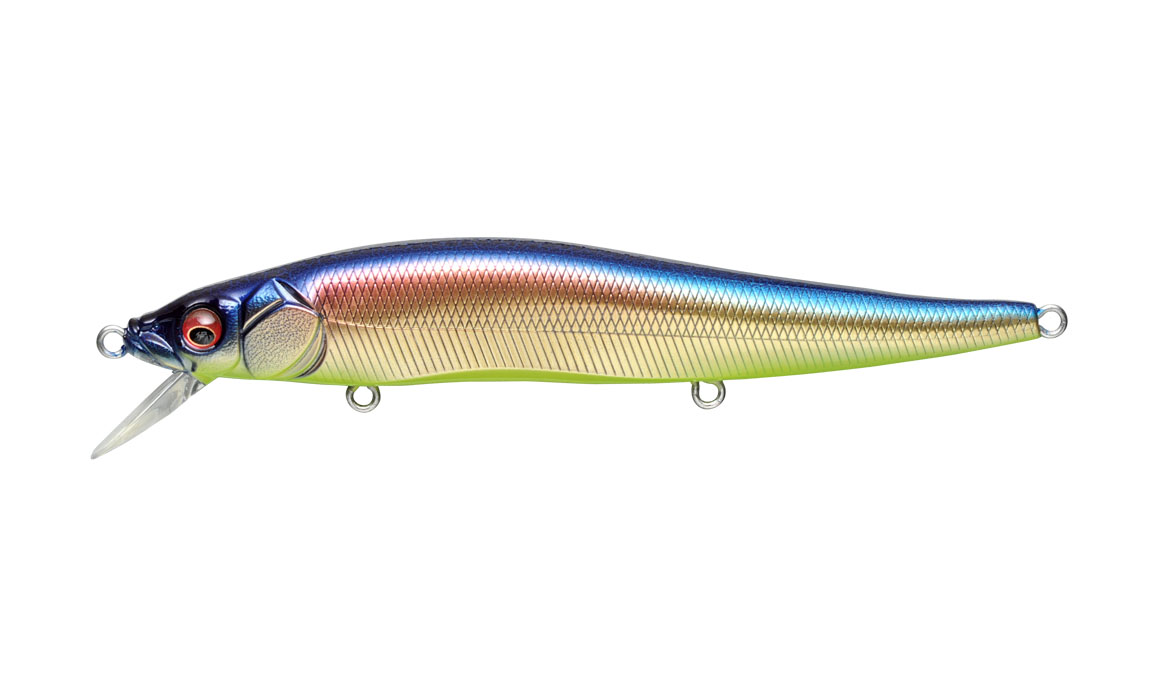
Retrieves and Modifications
Cousvis’ springtime retrieves are either the standard combination of quick jerks followed by a long pause, or alternatively a “pull” retrieve punctuated by pauses of varying duration.
“A slow and steady pull can really trigger bites,” he said. “When you show them that long pause in their face, even the subtlest movement is enough. It can be absolutely lights out in the spring.” That’s particularly true with largemouths, who seem to like that “slow pull” even more than their brown brethren. “Slower is usually better,” he added.
The mood of the fish may dictate a lure change, either in model or size. For example, when the pull is evoking the most reactions, he’s less likely to use the X-NANAHAN. “It’s almost too active,” he explained. “It’s good when you’re using an active, jerking retrieve, but you tend to overwork it even with a light pull.”
When the long pull isn’t effective, especially as the season progresses, he’ll often upsize his lure and to move more water and makes more noise. On southern fisheries, that might dictate an ITO SHINER or the KANATA, while on his home waters he’ll likely just go up to the standard VISION ONETEN.
When a long pause is the clear ticket to getting more bites, or if the fish are merely nipping at the lure, he’ll often replace the rear hook with a feathered treble. On long pauses it provides the little something extra to lead them to commit. It tends to get the call more often when he’s exclusively chasing largemouth as opposed to exclusively smallmouth. Other changes that have proven effective at times are adding an extra split ring on the rear treble to reach back further for bites, or opting for a red rear treble to draw the eye more subtly than a feathered offering.
In order to make the lure suspend perfectly, it’s necessary to take into account changing conditions, most notably water temperature. What works when in a certain range might have altogether different impacts if it’s a few degrees cooler or a few degrees warmer. As the water warms up, it takes less to make it act properly – sometimes something as minute as a snap or a tiny piece of tungsten tape will do the trick. Accordingly, inspect your lure’s action frequently. Just because it behaved properly a week ago doesn’t mean it’s optimal today.
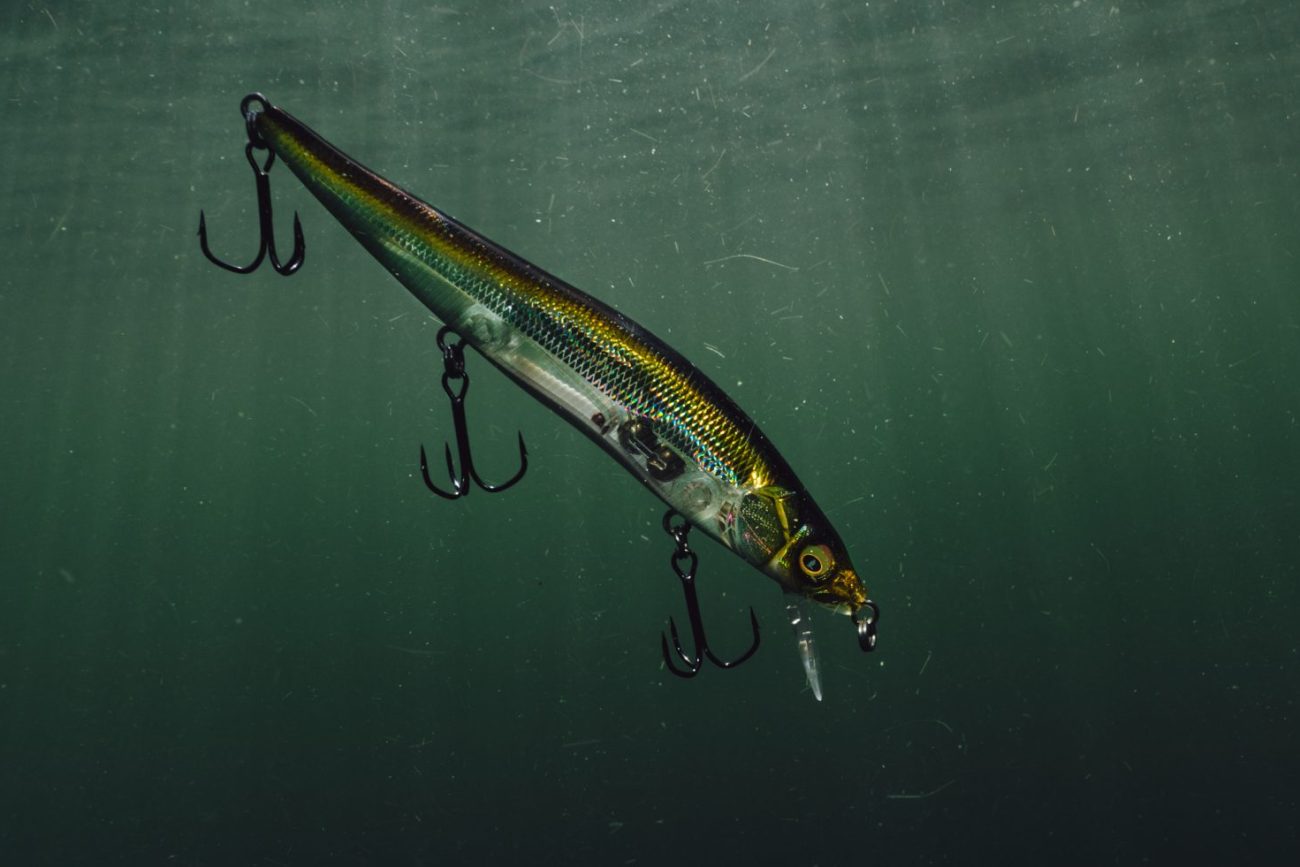
Cousvis finds that early season fish can be exceptionally picky about a lure’s running depth and therefore there are times when it pays to alter the float or the weight of the lure.
“In summertime, 1-2 feet may not make a huge difference, but in the springtime, 8 feet versus 7 feet may be huge. The smallmouths don’t want to swim up a foot to eat. That’s when I’ll put a SuspenDot on my lure. I want a lure that straight suspends or sinks super-slow. Afternoon largemouth tend to suspend in the upper water column, but he’ll still occasionally add weight to make his ONETEN’s slow-sinking. “You can pop it back toward you and it’ll fall backwards,” he explained.
In shallower water, he makes sure to add weight in a manner that allows the lure to sit evenly to keep the jerkbait from digging on the jerk. In shallow situations, he’s not concerned about getting it as deep as possible, but rather about maximizing hookup percentage and side-to-side darting action.
Tackle for Springtime Jerkbaits
Cousvis has confidence in the Megabass hooks that come standard on these lures, particularly with largemouth. In his experience, they rarely come unbuttoned once hooked, not only because they tend to be less spastic during the fight, but also because their mouths are so much softer. On the occasion when heavier than usual equipment is needed or when he’s working the bait more aggressively, he goes to a slightly heavier hook, like the Owner ST36 in the same size. A friend in Florida reported catching giants on the ONETEN JR but said that he was bending out his hooks too often. The successful solution was to eliminate the middle hook and upsize the front and back hooks by one size. Nevertheless, he’ll keep his finger ready to mash down the button on his reel to prevent pulling the lure away from them on boatside strikes and last-ditch fights.
Those sorts of changes aren’t always necessary. He said that many anglers overpower their jerkbaits with the wrong tackle, and that results not only in bent-out hooks, but also other missed opportunities.
“I still throw the ONETEN JR on baitcasting tackle, usually the DESTROYER P5 ONETEN STICK,” he said. “The ONETEN STICK bends deeper into the mid-section than the faster-tapered ONETEN SPECIAL, so it’s great for the lighter Jr size. The whip in the belly allows long casts.” He pairs them with baitcasting reels, in a 70 or 100 size, tuned to the particular conditions. When throwing into the wind, he may go to an OROCHI XX RONIN 6’8” spinning rod with a matching 2500-sized spinning reel.
“On the spinning tackle, I’ll typically use 10-pound braid to 8-pound fluorocarbon, but I’ll go as low as 6 in ultra-clear, flat calm water,” he said. “The lighter line allows the jerkbait to move a bit freer and looks more natural.”
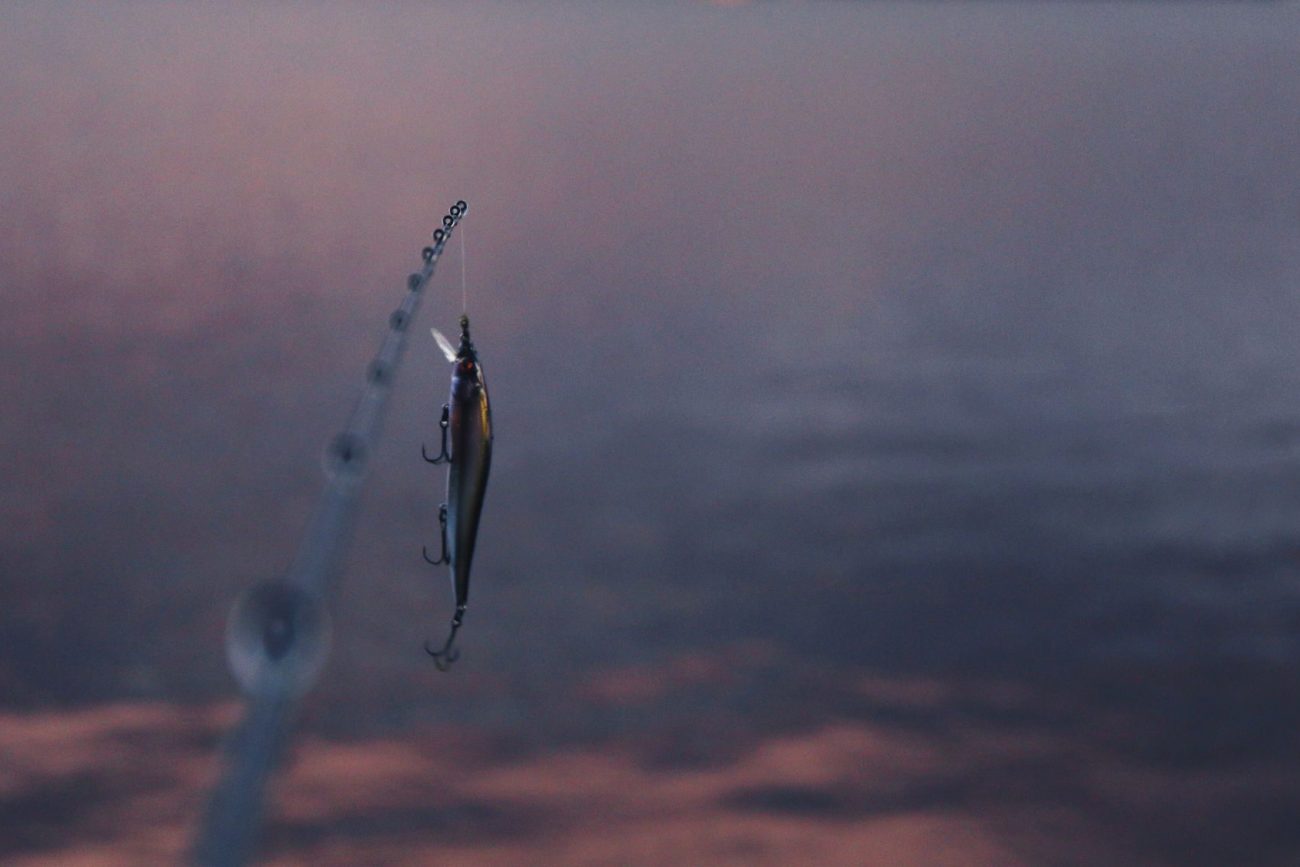
It’s baitcasting gear where anglers tend to use the wrong line. “It’s amazing how many guys throw these lures on 12 pound test,” he said. “Maybe with an ITO SHINER, where you have three #4 hooks, or when you’re around cover and need the extra strength, but with these smaller baits I’ll never go above 8 or 10lb test.”
With the larger lures, especially when fishing for largemouths, he very much relies on the MEGABSS LEVANTE JERKBAIT SPECIAL rod, which is slower than the comparable OROCHI XX. If the rod is too fast, and not soft far enough down, it can be hard to fish the lures slow enough. The rod balances with a 100-sized reel perfectly. He still tends to favor 10-pound test fluorocarbon for most applications, but he might upsize to 12 when he’s fishing relatively shallow among larger fish. “I’m not as concerned with getting the bait to do everything it can do because I’m dulling it down with those long pulls.”
Largemouth Groupings
Because the pre-spawn largemouth come up early and are generally afraid to stray too far from deep water, they can be super-easy pickings.
“When those fresh docks get put in early in the spring it’s amazing how many you can catch from one,” Cousvis explained. “I’ve caught 28 pounds of largemouths for my best five on seven casts. It has to have deeper water nearby. They never stay – just go up and then back down.”
The key to intercepting them on the way there, on the way back, or during the stopover, is to understand why they choose particular docks and shorelines.
“There has to be some sort of depression or ditch,” he explained. Find the highway and you can pinpoint the fish, thus allowing you to adequately slow down your retrieve, keeping it in the strike zone. “You need to keep that bait in their face long enough to eat.”
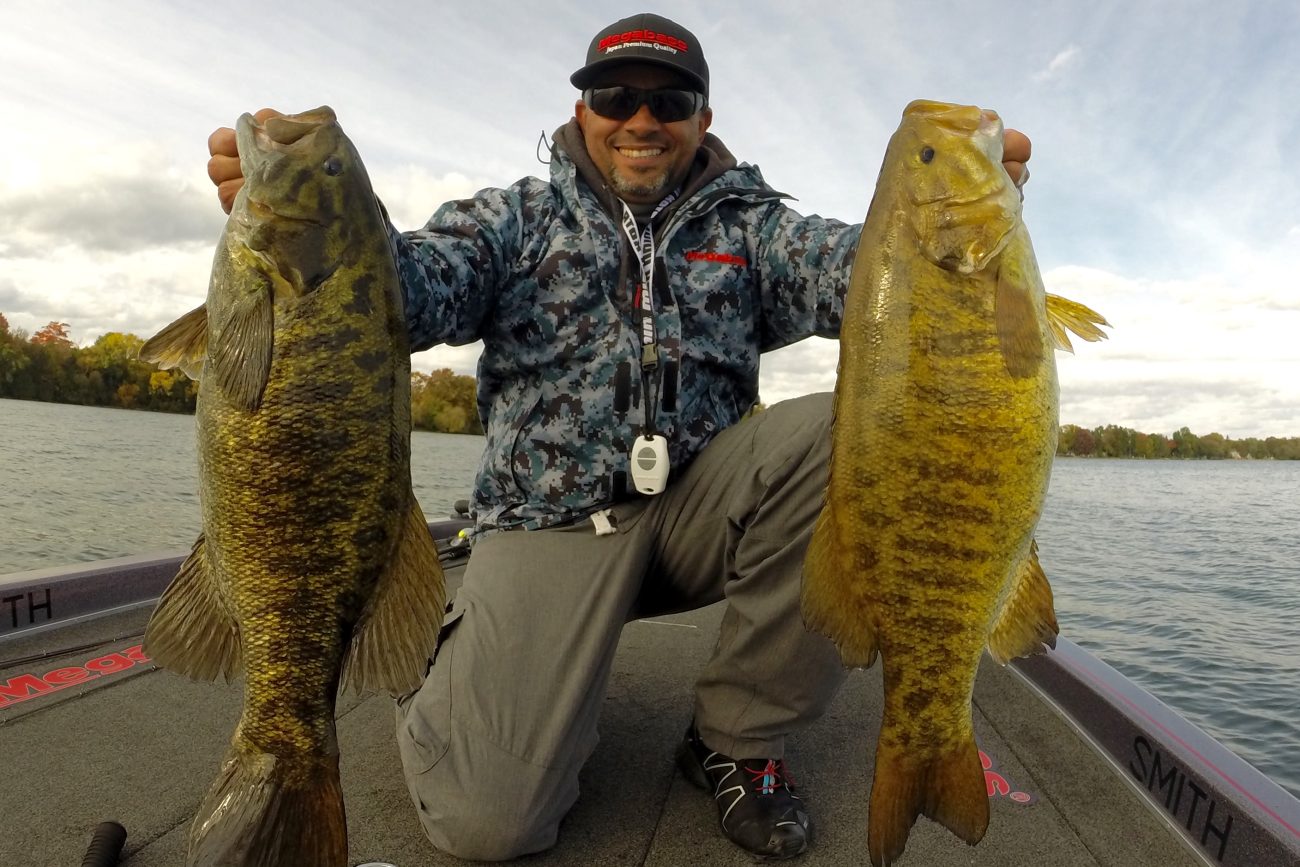
Keeping Crazy Eaters Buttoned Up
By choosing the right rod, and a quality fluorocarbon, Cousvis ensures that he sinks the hooks securely at the end of a long cast, and if the fish strikes unexpectedly at boatside he has his drag set to slip appropriately.
“That initial hookset is everything,” he explained. “You’re often out of position. It’s amazing how many times they eat it close and immediately come flying out of the water and go nuts. Everything happens so fast.” When they’re consistently eating closer to him, he’ll back the drag off even more than normal. He’s gotten to the point where he can gauge whether his drag is set properly with a quick pull, but for those anglers with less experience, he suggests that you “grab the bait and bend the rod. The drag should slip ever so softly.”
When the fish passes by in the clear water and it’s obvious that it’s only holding on by a single hook, he’ll try to poke the lure in the opposite direction to get the middle hook firmly sunk. To do this, you must use the rod to circle the fish back around in the opposite direction. Never turn the rod in the opposite direction too quickly or lightly hooked fish can come unbuttoned. Still, it pays to maximize shock absorption to account for sudden movements and the brute strength of big northern bass.
He said that summertime smallmouth – who often hammer the lure and then jump up to eye level, then go in the other direction when they hit the water – tend to get off more. No matter when he’s chasing them this way, however, he tries to exercise extreme patience, knowing that he has the proper tools for the job.
“The harder you fight them, the harder they fight back,” he explained.

